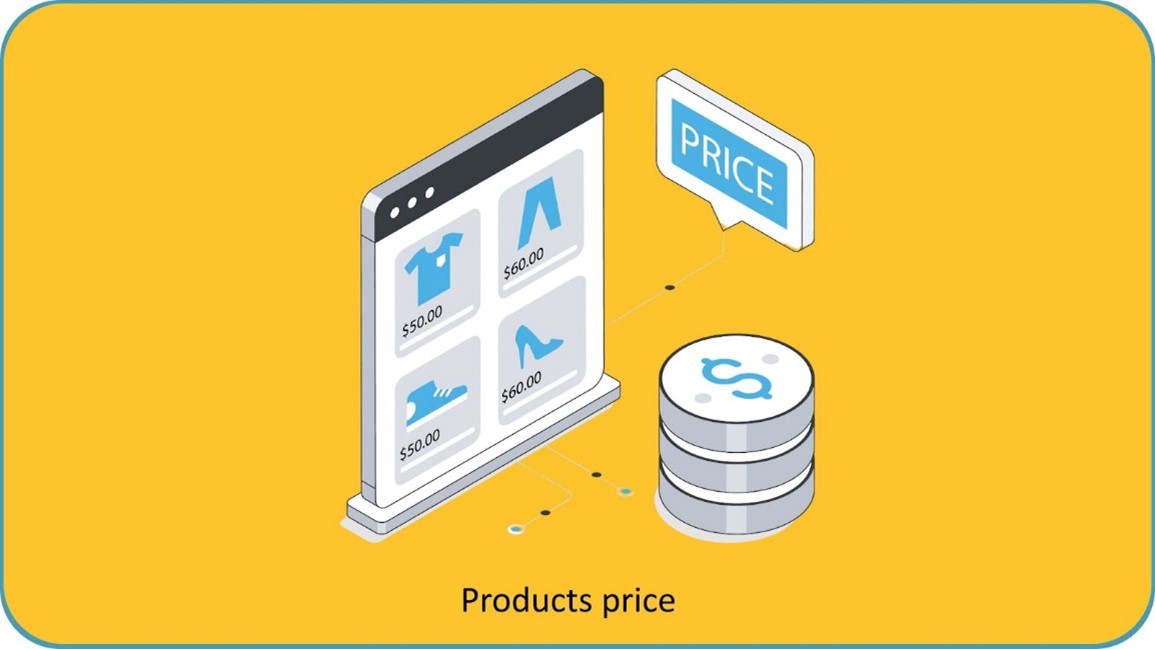By Prisync
Prices shift by a second or even milliseconds in eCommerce, and consumer demand fluctuates unpredictably. This situation shows why static pricing isn’t just an old-fashioned approach; it can actually be a disadvantage.
Picture this: you risk losing sales because your prices stay the same while competitors use AI to adjust their prices in real time. They end up capturing the attention of price-sensitive shoppers and maximising their profit margins. Merchants who ignore this risk more than just short-term profits. Without dynamic pricing strategies, businesses may face lower customer loyalty, shrinking margins, and irreversible losses in market share. Embracing dynamic and AI-powered pricing isn’t just about staying competitive for online sellers. It’s more likely about ensuring your business is ready for the future, where adaptability is key to survival.

What is Dynamic Pricing? (And Why AI is the Game-Changer)
What is dynamic pricing? Dynamic pricing practice involves changing prices in real time, based on a variety of factors, including demand, competitor pricing, inventory levels, and customer behaviour.
Traditional pricing methods often rely on manual changes, like adjusting prices during holidays or peak times. In contrast, AI-driven dynamic pricing trends to be more precise, is automated, and applicable to daily use for businesses.
Algorithms analyse numerous factors—ranging from competitor prices to stock availability—in order to make smart, profitable decisions. Let’s say, as a very popular case, we all know that Amazon prices are super dynamic. Yes, it is, just because it adjusts prices 2.5 million times a day using automation. Keep in mind that dynamic pricing can be really beneficial if you’re selling online and want to stay ahead of the game. Unfortunately, static pricing can only make it easier for your competitors to steal your customers with better deals.

Top Benefits of AI-Powered Dynamic Pricing for Ecommerce Merchants
Optimisation of profit & price: Find the equilibrium for both boosting margins and keeping your customers happy.
Competitiveness: Stay dynamic and beat rivals by reacting instantly to price changes.
Foreseeing demand & demand analysis: Try AI to predict. Holiday packages, viral products, better deals.
Personalised pricing: Segment customers. Loyal vs. new shoppers. You can offer tailored options.
Inventory management: Be aware of market stocks. Avoid stockouts or overstocking. Stay in aligning prices with market supply.
Common Concerns (And How to Address Them)
Do customers hate price changes?
It’s a valid worry nobody wants to have. Here’s the thing you should consider: customers don’t necessarily dislike price changes. Customers feel cheated when they are misled. Your key is transparency. Frame adjustments as limited-time deals or seasonal offers to create urgency, not frustration. Small, dynamic, and data-driven action can make your business jump while keeping the trust of your target audience.
Is dynamic pricing only for big companies?
No! Dynamic pricing isn’t just only for industry giants. AI-powered tools are making it accessible to have real-time competitor tracking and price optimisation within both small or big businesses. Automating manual tasks like price monitoring means even lean teams can stay agile without costing a lot.
What about ethics? Is dynamic pricing unethical?
Fairness is non-negotiable. Know that dynamic pricing doesn’t mean discriminatory practices. Think about umbrella prices in stormy weather or during scarcity times. Taking advantage of urgent needs isn’t part of your dynamic pricing strategy. You can use AI to combine margins with customer loyalty and always prioritise transparency. After all, trust is the ultimate competitive advantage.
By keeping in mind these concerns, retailers like you can adopt dynamic pricing confidently—without sacrificing ethics or customer relationships.
The Future of AI Pricing: Trends to Watch
The evolution of AI is transforming how online sellers set prices. It provides them with new ways to stay competitive. One important trend is hyper-personalisation.
Algorithms can look at individual shopping habits, past purchases, and even the type of device being used to adjust prices in real time. For instance, a shopper might see a special offer based on items they left in their cart.
Voice commerce is also rising, with smart assistants such as Alexa negotiating dynamic deals: “Find me the best price for X” could trigger instant discounts or bundle offers. As a plus, for instance, sustainability-driven pricing is becoming popular. It offers discounts to eco-conscious shoppers who choose recycled packaging or carbon-neutral shipping. Together, these changes show that the future of pricing will focus on accuracy, ethics, and building connections, not just making a profit.

How to Get Started with AI-Driven Pricing (Actionable Steps)
Step 1: Analyse your current pricing strategy
Consider tracking competitor prices and identify areas where your strategy may fall short. AI integration requires a thorough understanding of your current position.
Step 2: Choose the right pricing tool to continue
Select a solution that is compatible with your existing systems and within your budget. It should grow with your business and offer advanced analytics, real-time adjustments, and eCommerce compatibility.
Step 3: Test it with small groups
You can start with an easy and pilot program. One by one. Try using AI-driven pricing for one product category or a specific customer group. This will reduce risk and help you see how the system works in a controlled setting.
Step 4: Monitor and tweak
Keep track of key performance indicators such as conversion rates, average order value, and competitor data. Use this information to adapt your AI pricing strategy to align with market trends. So that you can have consistency in your results and ensure higher customer satisfaction while increasing profits.
Adapt or Get Left Behind
AI pricing is no longer optional. “Start experimenting now—your future competitors are already doing it.”
Published 03/03/2025



